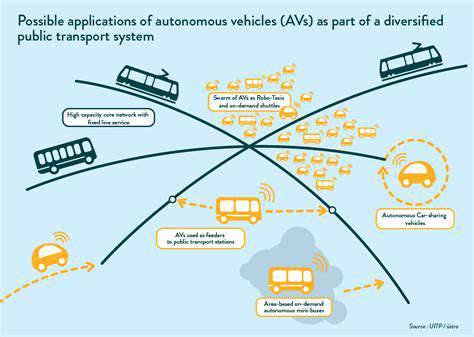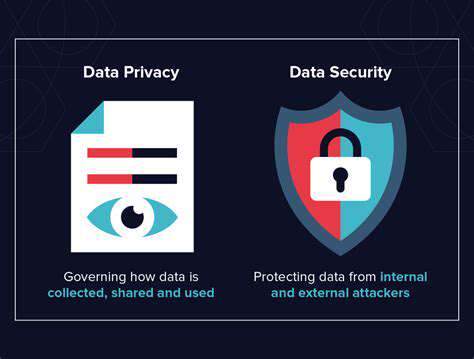Introduction to V2I Communication and Its Significance in Smart Cities
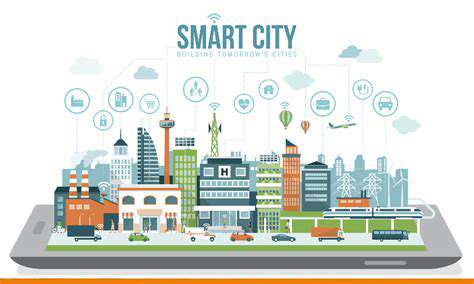
Understanding the Basics of V2I Communication
V2I communication, or Vehicle-to-Infrastructure communication, is a critical component of modern intelligent transportation systems. It enables vehicles to exchange information with road infrastructure such as traffic lights, road signs, and other stationary devices. This exchange of data aims to improve traffic flow, enhance safety, and reduce congestion in urban environments. The technology relies heavily on wireless communication protocols, such as Dedicated Short Range Communications (DSRC) and Cellular-V2X (C-V2X), to facilitate real-time data transfer between vehicles and infrastructure.
The primary goal of V2I communication is to create a smarter, more responsive transportation network. It allows vehicles to receive timely updates about traffic conditions, road hazards, and signal changes, enabling drivers to make better-informed decisions. This system is especially vital for autonomous vehicles, which depend on accurate and immediate data to navigate safely. As cities grow and traffic volumes increase, V2I will play an essential role in managing transportation efficiency and safety.
Effective V2I communication requires a robust infrastructure that can support high data throughput and low latency. This involves deploying roadside units (RSUs) equipped with transceivers along major roads and intersections. These units act as communication hubs, transmitting relevant information to passing vehicles. The integration of V2I with other intelligent transportation systems (ITS) components enhances overall traffic management, leading to smoother and safer journeys for all users.
Technologies Behind V2I Communication
Several key technologies underpin V2I communication systems, with wireless communication protocols being at the core. Dedicated Short Range Communications (DSRC) was among the first to be developed specifically for automotive use, providing reliable, low-latency links suitable for safety-critical applications. More recently, Cellular-V2X (C-V2X) leverages existing cellular networks to facilitate Vehicle-to-Infrastructure communication, offering broader coverage and scalability.
The choice of technology impacts the effectiveness and deployment of V2I systems across different regions. DSRC has been favored in North America and Japan, while C-V2X has gained traction in Europe and other parts of the world. Both technologies aim to ensure secure, fast, and reliable data exchange, but they differ in infrastructure requirements and compatibility with existing cellular networks. As the technology evolves, hybrid approaches combining these protocols may become common to maximize coverage and performance.
In addition to wireless protocols, other technological advancements such as edge computing, high-definition maps, and artificial intelligence play vital roles. These components enable V2I systems to process large amounts of data efficiently, make real-time decisions, and support autonomous vehicle operations. The integration of these technologies ultimately enhances the robustness and intelligence of vehicle-to-infrastructure communication systems.
Challenges and Future Prospects of V2I Communication
Despite the promising benefits, V2I communication faces several challenges that need to be addressed for widespread adoption. One major hurdle is ensuring interoperability between different systems and devices from various manufacturers, which requires standardized protocols and regulations. Additionally, concerns about data security and privacy are paramount, as the exchange of real-time information can be vulnerable to cyber-attacks and misuse.
Another challenge involves infrastructure costs and deployment logistics, especially in densely populated urban areas. Upgrading existing roads with roadside units and establishing reliable communication networks demand significant investment and planning. Moreover, ensuring consistent coverage and low latency in diverse environments remains an ongoing technical challenge. However, ongoing research, technological advancements, and policy support are paving the way for the future of V2I communication.
The future of V2I is promising, with potential developments including more sophisticated data analytics, integration with other vehicle communication systems, and the widespread deployment of autonomous vehicles. As cities aim to become smarter and more sustainable, V2I will be fundamental in achieving efficient traffic management, reducing accidents, and supporting autonomous transportation. With continued innovation and collaboration, V2I communication is set to transform the landscape of urban mobility in the coming decades.
Enhancing Traffic Management and Reducing Congestion
Implementing Smart Traffic Signal Systems for Improved Flow
Smart Traffic Signal Systems utilize V2I communication to dynamically adjust signal timings based on real-time traffic conditions. By receiving data from connected vehicles and infrastructure, these systems can optimize traffic flow, reduce waiting times at intersections, and minimize congestion during peak hours. This proactive approach ensures smoother transitions for vehicles, decreasing idling and emissions, and ultimately enhancing overall urban mobility.
Additionally, the integration of adaptive signal control algorithms allows traffic signals to respond to unexpected incidents or fluctuating traffic patterns promptly. This adaptability helps in preventing bottlenecks before they form, reducing the likelihood of accidents caused by sudden stops or erratic driving behaviors. As a result, cities can achieve more efficient traffic management, leading to a safer and more reliable transportation network for all users.
Leveraging Data Analytics for Predictive Traffic Management
Data analytics plays a crucial role in transforming V2I communication into actionable insights for traffic management. By analyzing data collected from connected vehicles and infrastructure sensors, transportation authorities can identify patterns and predict congestion hotspots before they occur. This predictive capability allows for preemptive measures such as rerouting traffic, adjusting signal timings, or deploying traffic enforcement where necessary.
Moreover, utilizing machine learning algorithms on large datasets enables a more sophisticated understanding of traffic dynamics over time. These analytics can help in planning infrastructure upgrades, optimizing public transportation schedules, and designing smarter urban layouts. Ultimately, embracing data-driven strategies enhances the capacity of traffic systems to adapt to evolving conditions, significantly reducing congestion and improving commuter experience.
Improving Road Safety and Accident Prevention
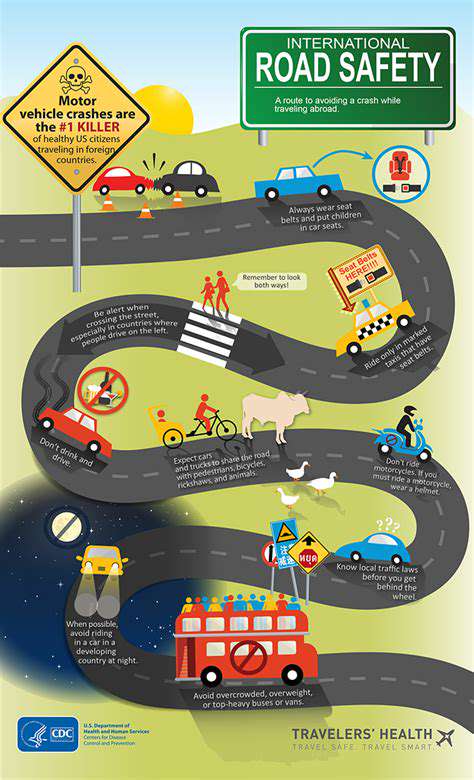
Understanding the Main Causes of Road Accidents
Numerous factors contribute to road accidents, including driver negligence, poor road conditions, and vehicle malfunctions. Recognizing these causes is essential for developing effective safety measures. Driver behavior, such as speeding or distracted driving, remains the leading cause of most accidents worldwide. Additionally, environmental factors like weather conditions can significantly increase the risk of accidents. By understanding these causes, authorities can target specific areas for improvement and enforce stricter safety regulations.
The Role of Road Infrastructure in Safety
Well-designed road infrastructure plays a crucial role in minimizing accidents. Proper signage, adequate lighting, and clear lane markings help guide drivers and prevent confusion. Investing in safer road designs, such as roundabouts instead of intersections, can reduce collision points and improve traffic flow. Moreover, regular maintenance of roads to repair potholes and remove obstacles is vital in preventing accidents caused by hazardous conditions. Enhancing infrastructure quality directly correlates with a significant decline in traffic-related injuries and fatalities.
Smart traffic management systems utilizing sensors and real-time data can optimize traffic flow and reduce congestion, further decreasing accident risks. Cities that prioritize infrastructure development often see a notable improvement in overall road safety. Therefore, continuous assessment and upgrading of road systems are indispensable for sustainable safety improvements.
The Impact of Vehicle Safety Features
Modern vehicles come equipped with advanced safety features designed to protect occupants and reduce accident severity. Technologies such as anti-lock braking systems (ABS), electronic stability control (ESC), and automatic emergency braking (AEB) have proven effective in preventing crashes. Investing in vehicles with these features can significantly lower the chances of accidents occurring. Furthermore, driver-assist systems like lane departure warnings and blind-spot detection enhance awareness and decision-making on the road.
Vehicle safety standards continue to evolve, emphasizing the importance of regular maintenance and updates to safety systems. Encouraging consumers to choose safer vehicles through incentives and awareness campaigns can make a substantial difference in overall road safety statistics.
Educational Campaigns and Driver Training
Effective driver education is fundamental in cultivating responsible road behavior. Comprehensive training programs that emphasize defensive driving, adherence to traffic laws, and awareness of hazards can drastically reduce accidents. Public awareness campaigns targeting specific issues like drunk driving and texting while driving are vital components of safety strategies. These initiatives help change social norms and promote safer driving habits across diverse populations.
In addition, refresher courses for experienced drivers can reinforce safe practices and update them on new laws and technologies. Governments and organizations should collaborate to implement ongoing educational efforts, ensuring that drivers are well-informed and prepared to handle various road situations.
Legal Policies and Enforcement Measures
Strong legal policies are necessary to deter reckless driving and enforce road safety standards. Strict penalties for violations such as speeding, DUI, and illegal overtaking serve as effective deterrents. Consistent enforcement of traffic laws, combined with the use of surveillance cameras and sobriety checkpoints, enhances compliance among drivers. Additionally, implementing policies that mandate safety checks and vehicle inspections can prevent accidents caused by mechanical failures.
Policy-makers should continuously review and update legislation to adapt to emerging challenges and technological advancements. A robust legal framework, backed by diligent enforcement, is essential for creating a safer driving environment and reducing accident rates.
Innovations and Future Technologies in Road Safety
The future of road safety is increasingly linked to technological innovations such as autonomous vehicles, smart traffic systems, and connected infrastructure. These advancements promise to reduce human error, which accounts for most accidents. Self-driving cars equipped with sensors and AI can navigate complex traffic situations more safely than human drivers. Moreover, connected vehicle technology allows real-time communication between cars and traffic management centers, enhancing safety and traffic efficiency.
Research and development in this area are vital for creating safer roads and reducing fatalities. As these technologies become more accessible, widespread adoption will be crucial in transforming road safety paradigms globally. Governments and industries must collaborate to promote innovation and address challenges related to implementation and cybersecurity to maximize benefits.
Supporting Sustainable Urban Development and Environmental Goals
Integrating Smart Infrastructure for Eco-Friendly Urban Growth
Smart Infrastructure plays a crucial role in promoting sustainable urban development by optimizing resource utilization and reducing environmental impact. Advanced V2I communication systems enable real-time data exchange between vehicles and city infrastructure, facilitating efficient traffic management and minimizing congestion. This integration helps lower greenhouse gas emissions and improves air quality, aligning with broader environmental goals.
Implementing intelligent traffic signals and adaptive routing through V2I technology can significantly decrease idle times and unnecessary fuel consumption. Cities that invest in such infrastructure are better equipped to support growing populations while maintaining ecological balance. The shift towards smart, eco-conscious urban planning is essential for creating resilient and sustainable communities in the future.
Enhancing Public Transportation and Reducing Carbon Footprint
V2I technology enhances the effectiveness of public transportation systems by providing seamless communication between vehicles and transit infrastructure. This leads to more reliable schedules, reduced waiting times, and improved user experience, encouraging more residents to opt for sustainable transit options. As a result, reliance on private vehicles decreases, contributing to lower overall carbon emissions.
Furthermore, integrated V2I systems can coordinate the operation of buses, trams, and other transit modes, optimizing their routes and schedules based on Real-time Traffic Conditions. These improvements support cities’ environmental commitments by fostering greener mobility solutions and reducing the carbon footprint associated with urban transportation.
Promoting Sustainable Land Use and Urban Planning
Effective urban development depends on strategic land use planning that considers both environmental preservation and sustainable growth. V2I technology provides planners with detailed insights into traffic flow, land utilization, and environmental impacts, enabling more informed decision-making processes. This data-driven approach facilitates the design of compact, mixed-use developments that reduce urban sprawl and preserve green spaces.
By leveraging V2I systems, cities can promote walkable neighborhoods, prioritize cycling infrastructure, and support public transit corridors. These measures contribute to lower vehicle dependency, decreased emissions, and healthier urban environments, aligning urban planning practices with environmental sustainability goals.
Supporting Renewable Energy Integration and Smart Grid Management
The deployment of V2I technology extends beyond transportation, playing a vital role in integrating renewable energy sources into urban environments. Smart infrastructure can coordinate electric vehicle charging stations with the grid, ensuring efficient energy use and preventing overloads. This integration supports the transition to cleaner energy sources and reduces reliance on fossil fuels.
Additionally, V2I systems facilitate real-time monitoring and management of urban energy consumption, enabling cities to optimize their smart grid operations. By aligning transportation infrastructure with renewable energy initiatives, urban areas can significantly advance their sustainability objectives and reduce their overall environmental impact.
Challenges and Future Directions in V2I-Enabled Infrastructure
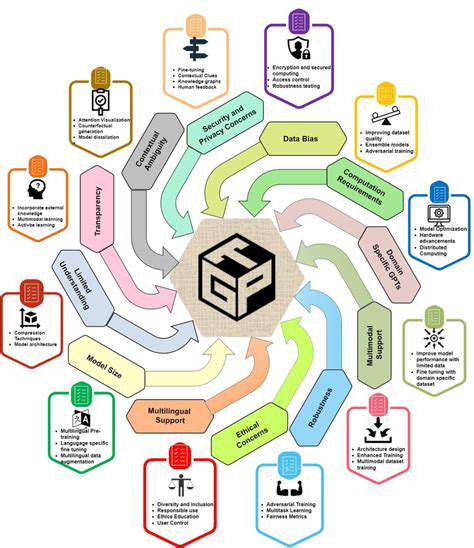
Overcoming Existing Barriers
The field of artificial intelligence (AI) faces numerous obstacles that hinder its widespread adoption and optimal performance. Data scarcity, particularly in niche areas, often limits the training and refinement of AI models. This lack of quality and quantity data can lead to inaccurate predictions and compromised decision-making capabilities. Furthermore, ensuring fairness and mitigating bias in AI algorithms remains a critical challenge. Developing algorithms that consistently avoid perpetuating harmful stereotypes and biases requires rigorous testing and ongoing monitoring.
Another significant hurdle is the high computational cost associated with training sophisticated AI models. This cost often restricts access to these powerful tools, especially for smaller research groups and emerging companies. The need for specialized hardware and expertise further exacerbates this problem. Addressing these resource constraints is crucial for democratizing AI and enabling its application across diverse sectors.
Advancements in Model Architecture and Training
Significant improvements in model architecture are crucial for achieving more robust and efficient AI systems. Novel approaches to deep learning architectures are constantly being explored, with the goal of increasing model capacity and reducing computational overhead. This includes research into more efficient neural networks and the development of new training techniques that accelerate convergence and improve generalization.
The development of explainable AI (XAI) is another critical area of advancement. Understanding how AI models arrive at their decisions is essential for building trust and confidence in their applications. This transparency is particularly important in safety-critical domains such as healthcare and finance. Furthermore, incorporating human feedback into the training process is vital for enhancing the quality and alignment of AI models with human values.
Addressing Ethical Considerations
The ethical implications of AI are multifaceted and require careful consideration. Bias in datasets used to train AI models can lead to discriminatory outcomes in real-world applications. Addressing this issue requires the careful curation of datasets and the development of algorithms that proactively mitigate potential bias. Furthermore, the potential for job displacement due to AI automation raises crucial social and economic concerns.
Ensuring responsible development and deployment of AI is paramount. Establishing clear ethical guidelines and regulations is essential for maintaining public trust and preventing misuse. This includes developing robust frameworks for accountability and oversight, as well as promoting ongoing dialogue among stakeholders, including researchers, policymakers, and the public.
Exploring New Applications and Domains
The potential applications of AI are vast and continue to expand across diverse sectors. AI has the potential to revolutionize healthcare, offering precision medicine and personalized treatments. The development of AI-powered diagnostic tools can significantly improve patient outcomes and reduce healthcare costs. Moreover, AI can optimize supply chains, automate manufacturing processes, and enhance customer service.
Exploration of AI in areas like environmental monitoring and climate modeling is also crucial. This includes using AI to analyze vast datasets of environmental data and identify patterns that can improve our understanding of climate change and develop effective mitigation strategies. This is critical for the future of our planet. Further research into these areas is essential to unlock the full potential of AI.
